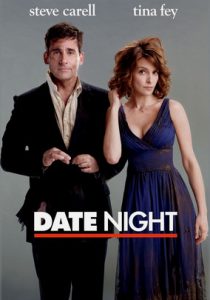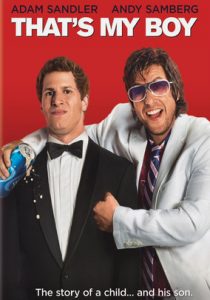Joy-2015
Director David O. Russell
Starring Jennifer Lawrence, Bradley Cooper, Robert DeNiro
Scott’s Review #485
Reviewed September 24, 2016
Grade: B-
Joy is a safe, mainstream, female-centered 2015 film, a biopic written for current star Jennifer Lawrence. She was nominated for a Best Actress Academy Award for her role and she carries the film.
Still, despite her performance, the film is nothing special and is written in a ho-hum manner.
It is simply not very compelling and the supporting characters are not utilized as they could have been. Despite being based on a true story, the writing is lazy and the plot far-fetched.
I expected more.
The film is another collaboration between director, David O. Russell, and big stars of the time- Lawrence, Bradley Cooper, and Robert DeNiro- all used in previous Russell films.
Lawrence plays Joy, a struggling Long Island mother of two, who is divorced from her husband (who still lives in the basement of her house), with multiple family members living with her, forming a support unit.
The sense is that Joy is the breadwinner of the family.
The story is narrated by Joy’s grandmother, who she calls Mimi (Diane Ladd). Mimi always knew Joy would be a success and we see a few scenes of Joy as a child, surviving her dysfunctional family and her parent’s disputes.
DeNiro plays her womanizing father, divorced from her mother (Virginia Madsen), who lies in bed all day watching soap operas. Cooper plays opportunist, QVC executive, Neil Walker, who takes a liking to Joy and helps her achieve her dream as a successful businesswoman after she patents an idea for a new, high-powered mop.
The authenticity of the time, 1989, and through the 1990s is apparent, as we see Joy working for Eastern Airlines, a company that would fold several years later. Also authentic were the automobiles of the time and the dresses and hairstyles.
These points the film does very well. And how cute was it to see famous daytime television stars such as Susan Lucci, portraying soap opera stars, as Joy’s mother lives her life vicariously through their tangled and bizarre soap lives?
Several scenes occur on the television set as we get glimpses of the soap stories.
The film as a whole, though, feels too neat.
Predictably, Joy faces obstacles on her way to success. Already struggling financially, she takes out a second mortgage on her house. At first, she cannot give away mops, let alone sell them.
On the brink of giving up, she finishes a meeting with execs who laugh at her product, but Walker is there to give her a break because she has a pretty face.
Predictably, things do not go well and there is a rather dull subplot about a company in Texas trying to steal Joy’s idea. When she goes and threatens them they immediately back down and obediently give in to her every whim.
This is both unrealistic and uninteresting.
I would have liked to have seen a messy back-and-forth or some court scenes, but the Texas company is portrayed as nothing but the villain.
The writing has either plot holes or contains missed opportunities altogether and many questions abound. Despite many scenes of Joy’s past we end up knowing little.
Her entire family lives with her in a suburban Long Island house- why does Joy own the house and not her mother or grandmother? Why does Joy have a rivalry with her half-sister, Peggy? Why does Joy’s father own an auto garage and still need to stay with Joy? Why is Joy’s mother mostly in bed?
Madsen as the mother is rather cartoonish and unnecessary to the plot as is Ladd- a dynamic actress given little of substance. I did not buy DeNiro as a cad nor in love with his wealthy new girlfriend Trudy (though seeing Isabella Rossellini in the part is a win), conveniently there to be Joy’s financer.
Despite an enormously talented cast, which is fantastic to see, most of the supporting parts could have been played by any actors, as the roles are not all that challenging, and the film itself is certainly a vehicle to showcase Jennifer Lawrence, David O. Russell’s current “it” girl.
This is not a slight towards Jennifer Lawrence since she is the best part. She successfully portrays Joy as a sympathetic, strong-willed, fair, decent human being, with enormous struggles, and a blue-collar sensibility.
Great performance, but I wish the writing and the other talents involved in the film were given better material.
Oscar Nominations: Best Actress-Jennifer Lawrence
























